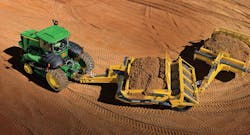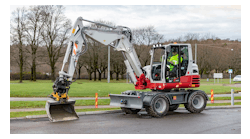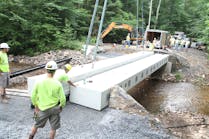A couple of years ago I wrote a blog for our sister publication MSW Management magazine about how wolves were reintroduced to Yellowstone National Park after being gone for about 70 years. The result of which was a dramatic change in the geography of Yellowstone. The wolves preyed on the deer population; the deer started to avoid certain areas; those over-grazed areas began to regenerate; and more trees grew which brought back more birds, beavers, otters, and rabbits.
Here’s the viral video, “How Wolves Change Rivers”:
While ecological researchers agree that introducing wolves into their former home range across the American West has been a good and essential occurrence for wildlife and natural habitats, what actually took place at Yellowstone with the wolves is more complex than what the video offers.
In a New York Times op-ed, field biologist Arthur Middleton writes:
“This story—that wolves fixed a broken Yellowstone by killing and frightening elk—is one of ecology’s most famous. It’s the classic example of what’s called a “trophic cascade,” and has appeared in textbooks, on National Geographic centerfolds and in this newspaper. Americans may know this story better than any other from ecology, and its grip on our imagination is one of the field’s proudest contributions to wildlife conservation. But there is a problem with the story: It’s not true.
However, like all big ideas in science, this one stimulated follow-up studies, and their results have been coming in. One study published in 2010 in the journal Ecology found that aspen trees hadn’t regrown despite a 60 percent decline in elk numbers. Even in areas where wolves killed the most elk, the elk weren’t scared enough to stop eating aspens. Other studies have agreed. In my own research at the University of Wyoming, my colleagues and I closely tracked wolves and elk east of Yellowstone from 2007 to 2010, and found that elk rarely changed their feeding behavior in response to wolves.”
You can find the editorial here.
Like many others, I was enchanted by the romance of the video and its hypnotic soundtrack, English accented narration, and mesmerizing photography.
Now as I abruptly segue into the subject of the nation’s infrastructure, and as we continue conversation on this subject, I remind myself of the need to carefully examine both the broad scope of it and how it also involves countless smaller issues.
We’re all hoping for a type of “trophic cascade” when it comes to rebuilding infrastructure, but even if one or two or more come along, it will take years and trillions of dollars to reach any realistic goals.
Infrastructure Week can be one catalyst. Infrastructure Week is next week from May 16–May 23, 2016. It is a national week of events, media coverage, and education and advocacy efforts to elevate infrastructure as a critical issue impacting all Americans. It comprises more than 100 affiliate organizations from all sectors of the nation’s economy and civil society. Forester Media, the publisher of Grading & Excavation Contractor magazine, is an Infrastructure Week affiliate. And Grading & Excavation Contractor has already started the conversation.
I reached out to various manufacturing executives and industry experts with four questions regarding the state of our infrastructure. For weeks we’ve been publishing their responses in this blog. We’ve heard from the Association of Equipment Manufacturers (AEM), CASE, John Deere, Volvo, and Trimble.
Today we hear from Brian Turmail, the Senior Director of Public Affairs for the Associated General Contractors of America.
Grading & Excavation Contractor (GX): Which infrastructure projects should be given priority? Roads and bridges? Dams and levees? Water supply? Electrical grid?
Brian Turmail (BT): The fact is all our public infrastructure is vital and our policymakers should not be putting us in a position of having decide whether it is more important for people to have clean drinking water, safe highway networks, and efficient power supplies. They are all important.
GX: Is there a solution to long-term infrastructure funding?
BT: Yes, the solution is relatively simple—we need to establish reliable long-term mechanisms for funding our public infrastructure maintenance and modernizations. The challenge is our national politicians appear to lack the will to ask those who benefit from public infrastructure to pay for it.
GX: What kind of harm is the current state of our infrastructure doing to the economy and the community?
BT: Stifling economic growth, contributing to higher vehicle fatality rates, and threatening the safety of many communities affected by poor drinking water conditions.
GX: What can various government entities—from local to federal—do to attract private sector support and investment?
BT: Take a realistic approach to risk allocation, guarantee a minimum return on investment.
GX: Thank you, Brian.
The issues go well past grading and excavation. All of Forester’s publications, Stormwater, Erosion Control, Business Energy, Water Efficiency, and MSW Management have asked the same four questions of their various industry executives and experts. All of the discussions will be here on the Forester Network before and after Infrastructure Week.
The discussion isn’t just for company executives and industry experts. Please go to our comments section, and let us know what you think.








